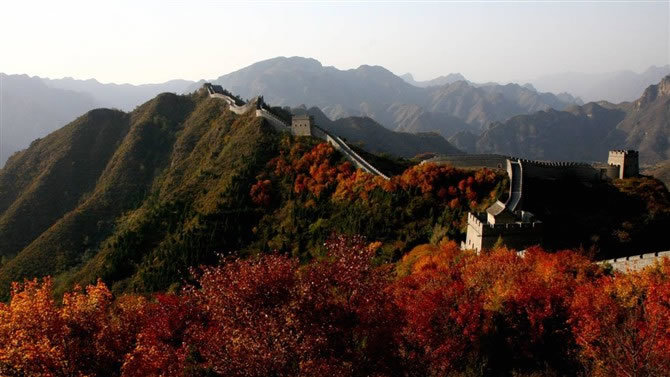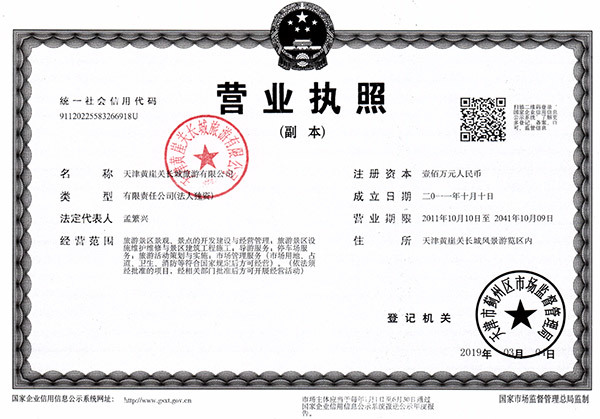


Huangyaguan is located on Dongshan, 30 kilometers north of the north end of the city. It was built in the Northern Qi Dynasty and rebuilt in the Ming Dynasty, including the yellow cliff pass and the Taiping village. When Qi Jiguang, the famous Ming Dynasty master in the town of Ji Zhen, had been redesigned and covered with bricks, the the Great Wall was characterized by brick and stone, a round enemy building and hollow bricks with hollow and solid bricks. The Guan Cheng fort and the enemy's platform water pass are all right, and the mountains cross the river, and the layout is ingenious. The cliffs of the East and west sides of Guancheng are shrank, and the mountains are steep and magnificent. There is a trend of "one husband is in charge of customs, and no one is able to open it". Because the cliff was reflected in the Western sunset, thousands of golden lights were reflected, hence the name "yellow cliff pass". Guancheng is composed of Zheng Guan, Shui Guan, East West City and Beacon Tower.
Shui Guan is a five span bridge type architecture, built in the Ming and Yongle years. The water is 75.5 meters in length and 12.15 meters high. To control the river valley, east to Taiping Village, West to Huang Ya Guan City. There are pallets, perforations, iron fences, water, and horses. Wartime wartime enemy soldiers, in peacetime to collect taxes. Today, only the ruins of the north wall are also known as Bagua City, which is named as "Eight Diagrams Street" in the city. The Bagua city is the the Great Wall yamen, the location of the warehouse, the east facing the river, the West leaning on the hat top mountain, with the shape of the mountain shape, the irregular knife shape, from the east to the west is composed of three parts of the urn City, the outer city and the inner city. The East, West and south walls of the city walls are paved with three main gates and towers. The north wall is built without a gate because of its defensive needs. The Arctic Pavilion, commonly known as Guan Yu Temple, is built on the city platform.
Taiping village is located in the small Ping An village of 1 kilometers southeast of Huangya Guan, 700 meters above sea level, the east from the half of the mountain, the west to the widow building, the northwest to Phoenix building, the southwest connection water, the length of 873 meters. Here is the Walled Village, which is located on the eastern side of the yellow cliff city. It is famous for its steep mountains and magnificent the Great Wall.
Shui Guan is a five span bridge type architecture, built in the Ming and Yongle years. The water is 75.5 meters in length and 12.15 meters high. To control the river valley, east to Taiping Village, West to Huang Ya Guan City. There are pallets, perforations, iron fences, water, and horses. Wartime wartime enemy soldiers, in peacetime to collect taxes. Today, only the ruins of the north wall are also known as Bagua City, which is named as "Eight Diagrams Street" in the city. The Bagua city is the the Great Wall yamen, the location of the warehouse, the east facing the river, the West leaning on the hat top mountain, with the shape of the mountain shape, the irregular knife shape, from the east to the west is composed of three parts of the urn City, the outer city and the inner city. The East, West and south walls of the city walls are paved with three main gates and towers. The north wall is built without a gate because of its defensive needs. The Arctic Pavilion, commonly known as Guan Yu Temple, is built on the city platform.
Taiping village is located in the small Ping An village of 1 kilometers southeast of Huangya Guan, 700 meters above sea level, the east from the half of the mountain, the west to the widow building, the northwest to Phoenix building, the southwest connection water, the length of 873 meters. Here is the Walled Village, which is located on the eastern side of the yellow cliff city. It is famous for its steep mountains and magnificent the Great Wall.


